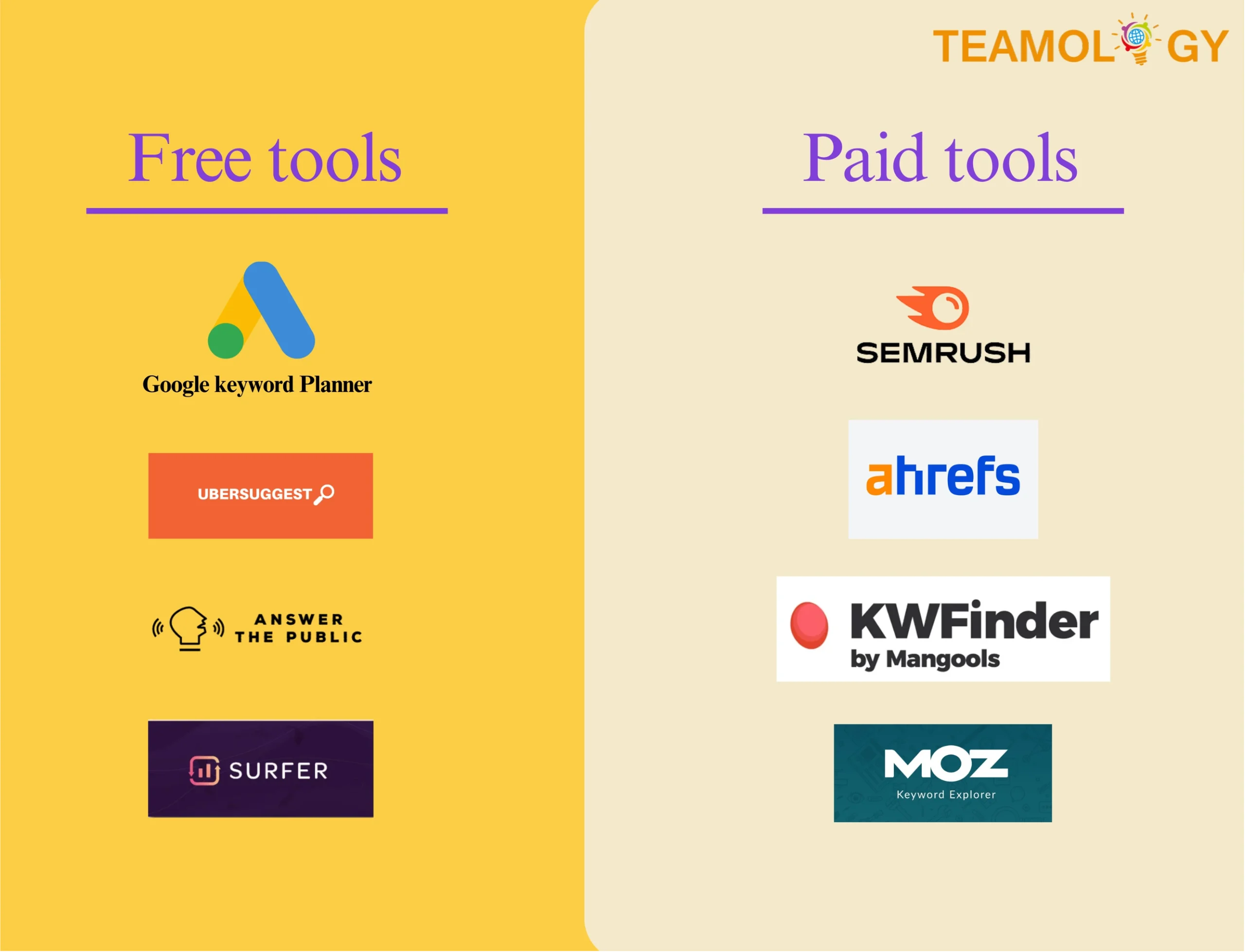In today’s online world, everyone wants their content to reach the masses. But how is this possible? Here comes the significance of keyword research. By keyword research, we mean discovering words or phrases that most people search on Google and other search engines. Our content or business websites can easily reach our target audience by using the right keywords. Today, we will try to understand how to do keyword research and how it can help websites grow in traffic, fostering conversions and business growth.
What is Keyword Research?
Keyword research is the process of determining what people are seeking on the internet. This helps us comprehend their goal, on which we may build our content. Keywords can be classified into three types:
- Short-Tail Keyword: Single word or tiny phrase like ‘phone’.
- Long-Tail Keyword: Lengthy and more specific words or phrases like “ Buy cheap smartphone”
- LSI Keyword: Other words or phrases related to the seed keyword like “Mobile price”, and “Smartphone features”.
Why Keyword Research is Important
- Boosting SEO and search visibility: using the right keyword may help your content rank on search engines like Google, allowing more people to view it.
- Understanding user intent: If you know the topics that people are attracted to, you may provide more relevant content.
- To increase conversion: When you use the right keywords based on your niche, you see more relevant traffic visiting your site and become potential customers.
- Sustaining the competition: Keyword research might prompt you to do something different than your competitors.
What are Niche Keywords?
Niche keywords are special keywords that are more applicable to certain topics and relevant audiences. For example, “Best educational app for kids” or “Bengali cooking recipes” are keywords that will coincide with the Indian Psyche. Niche keywords may give you more reach with less competition. Understanding how to find niche keyword opportunities is crucial for targeting specific audiences effectively.
Tools for Keyword Research: Free and Paid

Free vs Paid Tool for Keyword Research
Free Tools:
- Google Keyword Planner: Quite handy if you are seeking fresh keyword ideas.
- Uber Suggest: Excellent for finding Long-Tail keywords.
- Answer The Public: Helps to know what people are asking on the internet.
- Keyword Surfer: This tool allows you to view keyword volume live during Google searches.
Paid Tools:
- KWFinder: Helps locate low-competition keywords.
- Moz Keyword Explorer: Very good at analyzing keyword difficulty.
Whether you’re using free or paid tools, each can serve as an effective niche keyword finder to help you discover targeted opportunities in your specific market segment.
How to Research Keyword for Your Niche
1. Define Your Niche and Target Audience
Finding your niche or area of focus is crucial. Once you find the right niche, it will be easy for you to identify what your target audience wants, and you will be able to choose keywords that are relevant to them.
For example, if you are a Bengali blogger, use keywords that appeal to the local Bengalis. If you create your blogs in Tamil, then make content using keywords that are popular among the Tamilians.
2. Brainstorm and Expand Seed Keywords
First, come up with a few primary keywords relevant to your field. For example, if your niche is “domestic cleaning machines”, your seed keyword may be “vacuum cleaner”, “robot cleaner”, or “mobile cleaning tools”. Next, check at Google’s “People Also Ask” or “Related Search” section to get more keyword suggestions for your topic.
If you want to create content on “Bollywood Movies,” you may consider keywords like “Bollywood Movie Reviews”, “Bollywood Top Casts”, or “Most Popular Bollywood Movies”.
3. Use Keyword Research Tools to Find Relevant Keywords
Use keyword research tools if you want to do an extensive analysis of your seed keywords specific to your target audience. Check for keyword volumes, difficulty, and competition by using tools like Google Keyword Planner, SEMrush, or Uber Suggest.
4. Analyze Competitor Keywords
Analyze keywords used by your competitors to gain ideas for your content strategy. Use tools like SEMrush or Ahrefs to determine which keywords are effective for your rivals and where there is room for improvement. This will help you identify their content gaps so that you can fill them while developing your own content.
5. Evaluate Key Metrics: Search Volume, Competition, and CPC
Evaluate search volume, competition, and CPC(Cost per click) for each keyword. Keywords with high search volume and low competition might produce better results. For instance, a broad search term like “Smartphone” can be highly competitive and difficult to rank on search engines. However, long-tail keywords such as “Top Smartphones in 2024” or “Mobile shops in Kolkata” might pique the interest of highly targeted audiences.
6. Organize and Prioritize Keywords by Relevance and Intent
Organize your keywords according to the intent of the users. In general, there are two types of intent: Transactional and Informational.
Transactional Keywords
Whenever individuals want to purchase a product or service, they use transactional search phrases. Example:
- “Best Coffee Shop in Bangalore”
- “Book Your Home Delivery Service”
Informational Keywords
Informational keywords are normally used to get information or advice on something. Example:
- “Top Tourist Destinations in Kerala”
- “Most Popular Food Recipe’s”
So the idea is to choose and prioritize keywords that are consistent with your content strategy.
Conclusion
Keyword research is absolutely vital for your content to be audience-centric and effective. The right keyword selection can help your content reach your ideal audience, fostering visibility, engagement, and growth.
By following the above guidelines, you will be able to find appropriate keywords for your niche and industry. So, leverage the power of keyword research today and ensure the success of your content.


